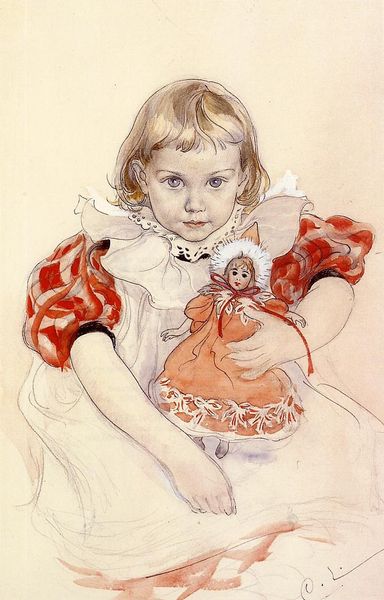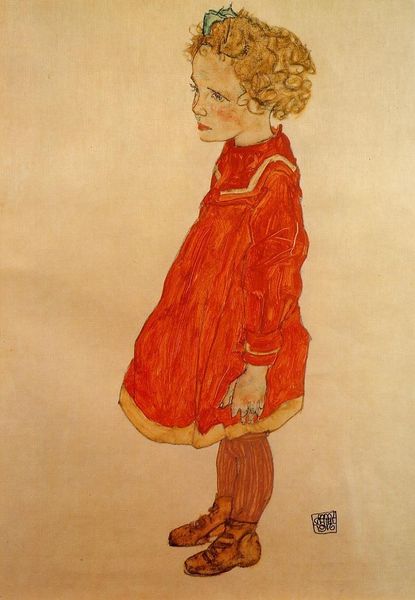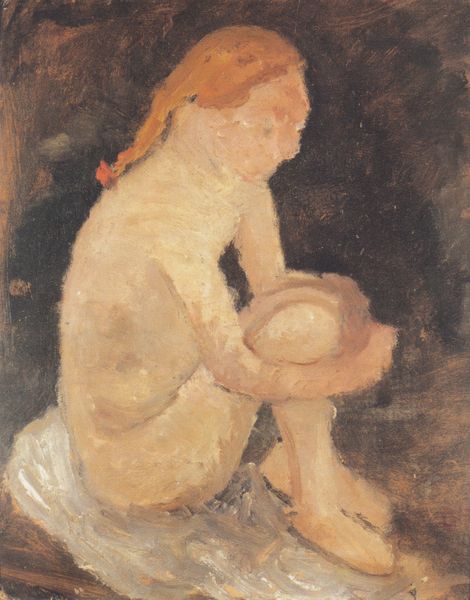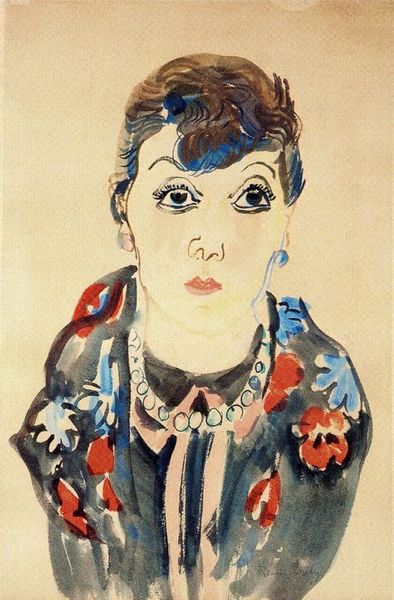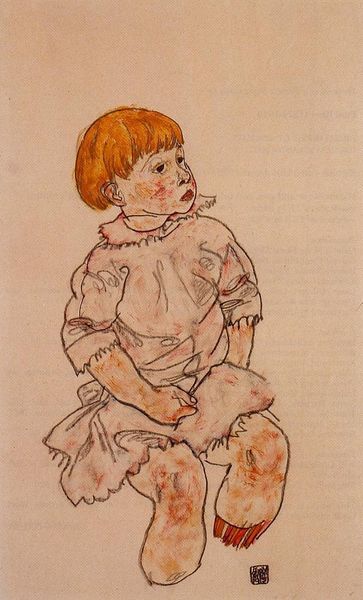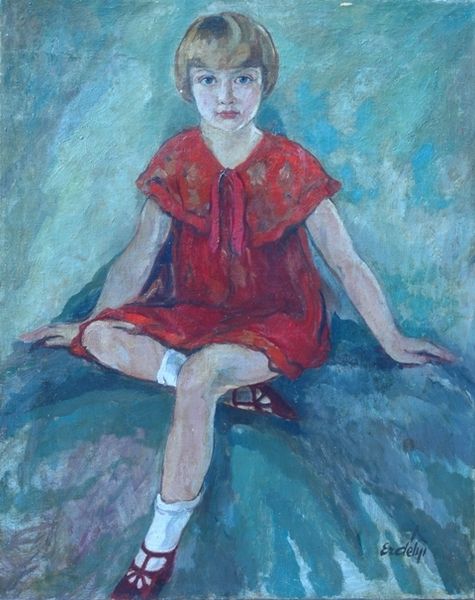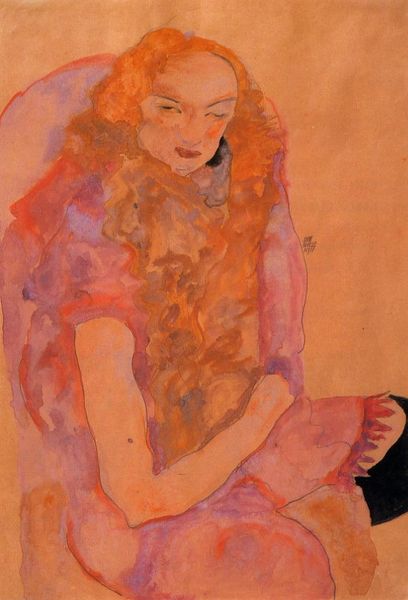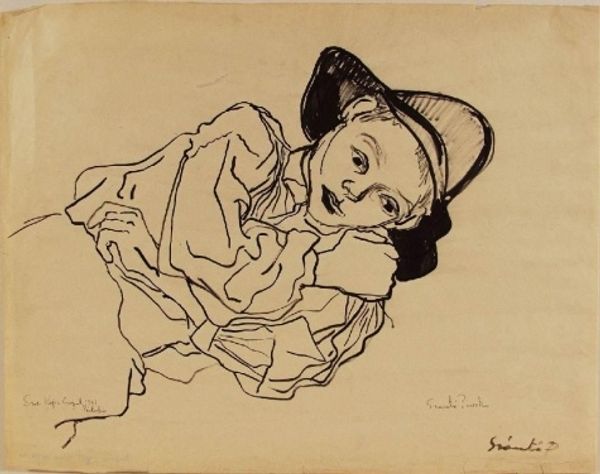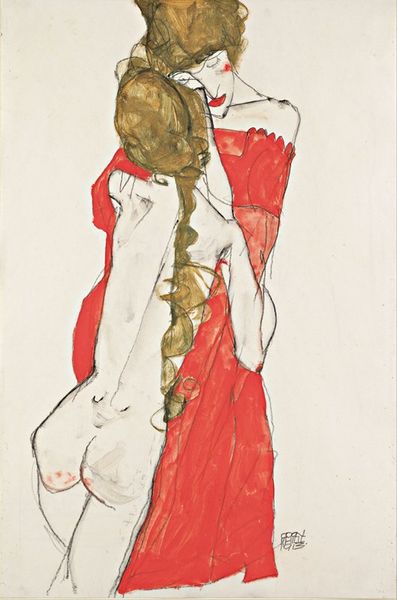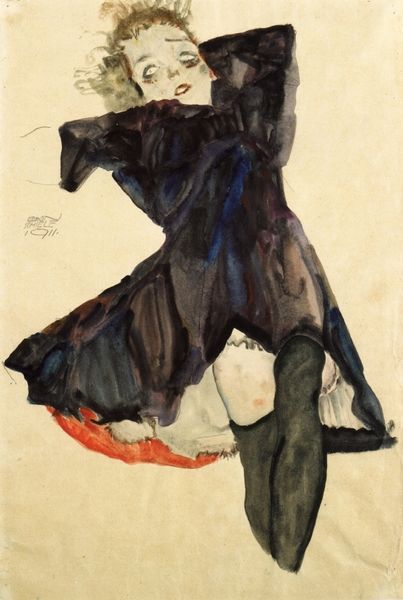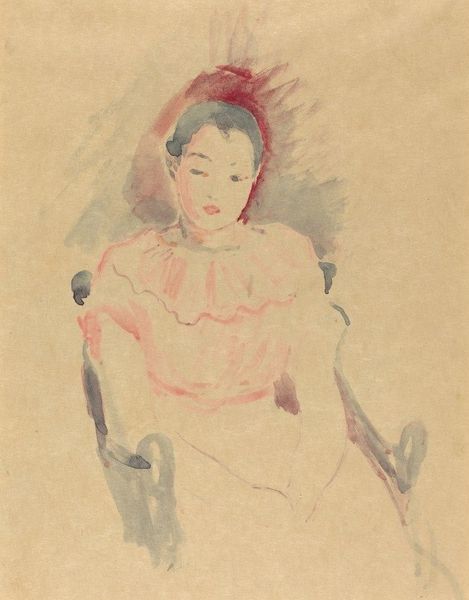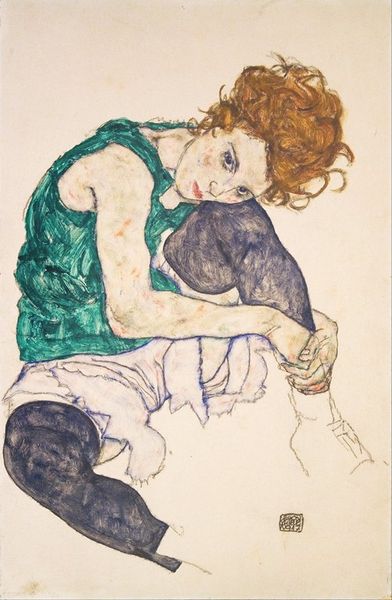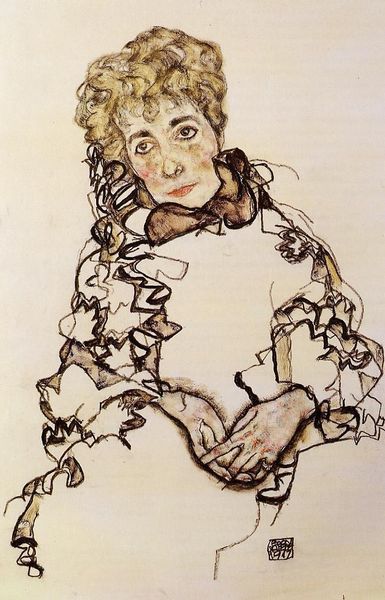
Seated Girl Facing Front 1911
0:00
0:00
egonschiele
Bavarian State Painting Collections, Munich, Germany
watercolor
#
portrait
#
self-portrait
#
oil painting
#
watercolor
#
child
#
expressionism
#
costume
#
watercolor
Copyright: Public domain
Curator: The vulnerability is striking. I am immediately drawn to the expression on the subject’s face; it's a direct, almost unsettling gaze. Editor: Today we are looking at Egon Schiele's “Seated Girl Facing Front,” executed in 1911. It resides now in the Bavarian State Painting Collections. Notice Schiele's characteristic use of watercolor. I'm interested in discussing its process and the representation of childhood here. Curator: The watercolor is used with such visible, deliberate brushstrokes that it reminds us that Schiele worked in a historical milieu. The marks become representative of the expressionist movement, and also represent Schiele's own interior state and turmoil in the making of it. I'm curious, who do you believe this young girl represents within the larger context of society? Editor: That’s a perceptive point. From a formal perspective, the angularity of the limbs contrasts so strikingly with the soft, rounded forms of the face and hair. I believe the clashing tones creates a symbolic juxtaposition. Consider Schiele’s other female portraits of the time – the power dynamics are present here, too. How does the attire, perhaps suggesting a working-class background, influence your analysis of social class and the way in which laborers of the time would consider the social mores? Curator: Definitely, the materials and techniques create an immediate emotional impact. We cannot deny that expressionistic portraiture offers something raw and unvarnished. However, it’s hard to dismiss the context surrounding it and to the larger question regarding class structures that dictate subject and medium choices in art of the period. Editor: Exactly. And the open, almost childlike nature of the application of paint on a potentially complex sitter creates visual dissonance that invites further investigation. The tension evident within the watercolor as an expressive choice contributes to its overall affect and cultural impact within the world of visual media. It's an exceptional work within the canon. Curator: I find I am considering Schiele’s practice now in the larger frame of production in art and history as I observe. Thanks for your input on Schiele’s mark-making techniques. Editor: And I thank you for directing my gaze towards an ever expanding context when thinking of materials.
Comments
No comments
Be the first to comment and join the conversation on the ultimate creative platform.
